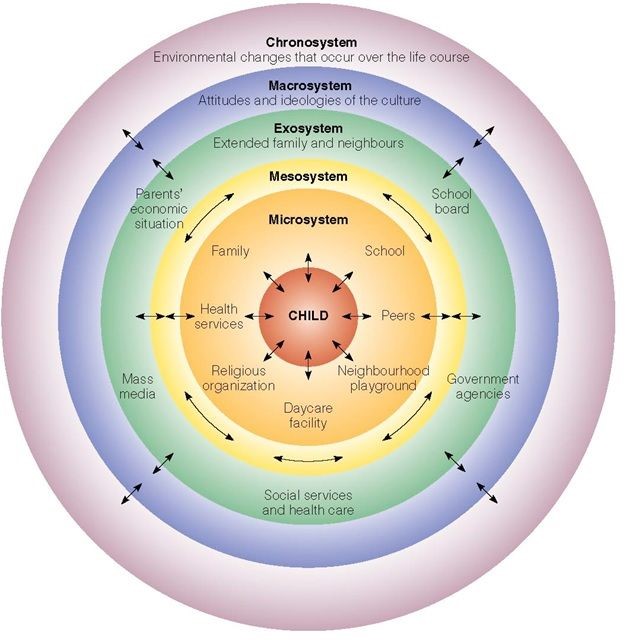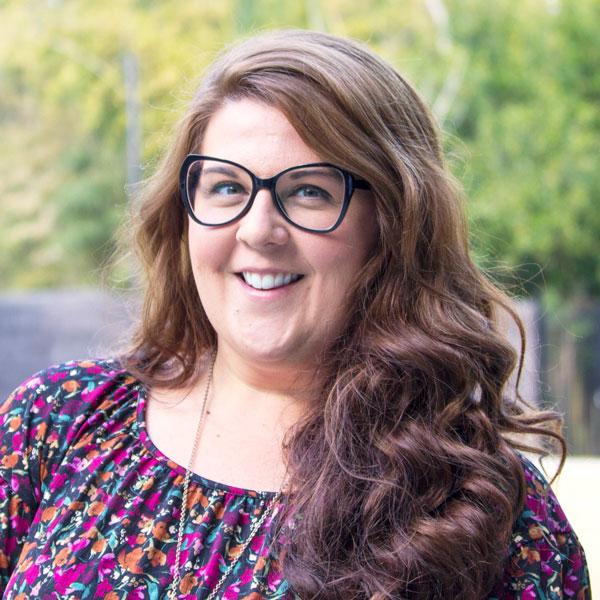Ecological Systems Theory in Adolescent Residential Treatment
By Caitlin Connolly, LCSW, CAADC
Ecological Systems Theory, or EST, is an integral part of the Skyland Trail adolescent residential treatment program for teens struggling with depression and anxiety. EST informs how our clinical team conceptualizes clients and develops treatment programming. On an individual level, an understanding of EST helps our treatment providers build effective therapeutic relationships with their teen patients. Both families and their teens learn to use EST as a framework to improve relationships within the family system as well as with schools and other organizations. So what is EST?
What is Ecological Systems Theory?
Ecological Systems Theory was developed in the 1970s by American psychologist Urie Bronfenbrenner. Bronfenbrenner’s work suggested that child development was not simply determined by the actions of parents and schools. His work encouraged researchers to think more broadly about how our cultures, economies, and policies influence child development directly and indirectly.
He posited that we should think about a child in their community like scientists in the field of ecology think about an organism in an ecosystem: as part of a web of interconnected organisms and systems. Bronfrenbrenner outlined 5 nested spheres of influence on child development moving outward from the child:
- Microsystem
- Mesosystem
- Exosystem
- Macrosystem
- chronosystem.

Why is Ecological Systems Theory important in teen mental health treatment?
Thinking about child development in terms of ecological systems theory helps us consider more opportunities to support healthy child development outside of the home. While parents have the most influence and responsibility, everyone from teachers to coaches to employers can help improve the ecosystem for children.
EST also emphasizes that all of these “layers” are nested, and each can influence other layers in both directions. Parent behavior obviously influences child development, but how an individual child responds to that behavior affects the ecosystem as well.
This multidirectional framing opens the door for children and teens to feel more empowered to make positive changes in their lives. While their influence may be limited, their choices and behavior help shape their interactions with the systems and people around them.
How is Ecological Systems Theory incorporated in residential treatment for teens?
In the Skyland Trail adolescent treatment program for teens ages 14 to 17, clients are assigned to one of two specialized curriculum tracks based on diagnoses and symptoms: dialectical behavior therapy (DBT) skills or cognitive behavioral therapy (CBT) skills. All clients also participate in group work with curriculum based on Ecological Systems Theory, or EST.
Teens participate in EST groups led by our treatment team staff twice each week. EST group curriculum includes guided discussions on topics like alcohol and substance use, dating and relationships, gender identity and sexuality, nutrition and physical health, sibling relationships, and social media use. Teens explore these issues through the lens of EST, identifying the different layers and systems involved. They also examine how they can use the CBT and DBT skills they are learning in treatment to influence change within an EST model.
For example, if they identify a need to change their behaviors related to alcohol, in addition to their individual choices to drink or not to drink, what else is going on their ecosystem that may influence those choices? Are peer groups a factor? Do they tend to drink in response to stress at school or at home? These explorations help teens identify more robust strategies to changing their own behaviors.
After developing new skills through treatment, some teens are even able to help suggest topics for discussion in the EST group, research the topic, and help lead conversations among their peers.
EST and Family Communications
Skyland Trail adolescent clients can bring discussions started in EST groups to family therapy sessions. Importantly, EST always places the adolescent at the center of the ecosystem. This framework may help parents consider how their own relationships with their parents, partners, or careers may influence their adolescent.
Working through an EST lens, parents and teens can start to have more effective conversations about challenging topics – topics that everyone may have been avoiding to try to reduce conflict. Instead of placing fault or blame, EST allows families to break down conflict into smaller pieces spread across an ecosystem and then find intervention points where each person can work toward change.
An EST perspective can help parents recognize connections between their teen’s unhealthy behaviors and contributing factors like school, peer relationships, siblings, past trauma or events, etc. Parents may have more power or influence to change some systems – or the teen’s relationship to those systems – than their teen feels they have on their own.
In some cases parents can amplify the effectiveness of their child’s efforts to advocate for what they need by being more involved. In other cases, parents may discover that their involvement is preventing their child from learning how to be their own advocate within their ecosystem.
EST and Treatment Planning
Ecological Systems Theory is an important lens through which our treatment team views each patient. We see each teen where they are within their ecosystem and we meet them there. By helping teens recognize that they are part of an ecosystem, our treatment team can help teens shift from fighting against their ecosystem to learning to work within it. What do they have the power to change outside of themselves? What do they have the power to change within themselves?
As adolescent clients move toward graduation and discharge from residential treatment, our treatment team considers EST when developing discharge plans. In addition to continued support from mental health professionals, what other supports can be provided for the teen in their school and community. Would an LGBTQ or BIPOC identity support group be helpful? What activities are available to support their physical health and fitness? Are accommodations needed at school?
Skyland Trail therapists and care coordinators provide a roadmap for parents to follow to make teens’ transitions back to their homes, schools, and communities as positive as possible.
An EST Lens Helps Teens Envision a Better Future
Combined with DBT skills, CBT skills, family therapy, and an effective medication strategy when appropriate, ecological systems theory helps teens in adolescent residential treatment view themselves as part of a larger interconnected web of people and systems. They learn healthy ways to shape that ecosystem to better support their needs now and in the future.

Caitlin Connolly, LCSW, CAADC, is the Director of Clinical Services for the Skyland Trail Adolescent Program. In her role, she manages and provides support and consultation for the adolescent clinical team and provides therapy to adolescent clients in the residential program.
